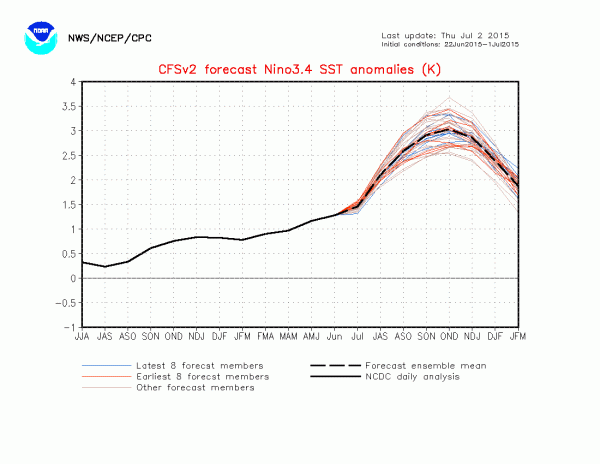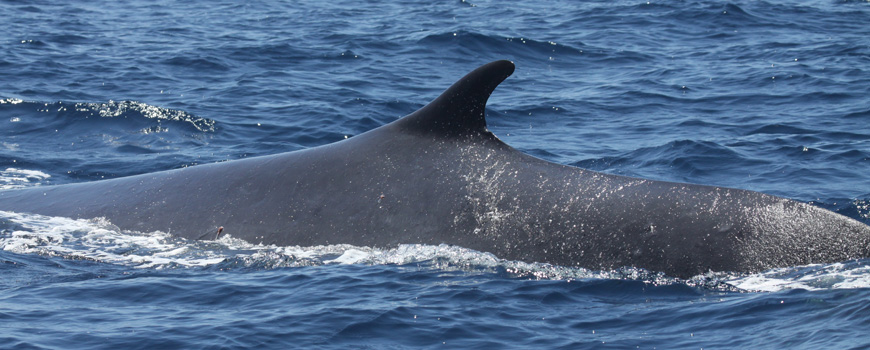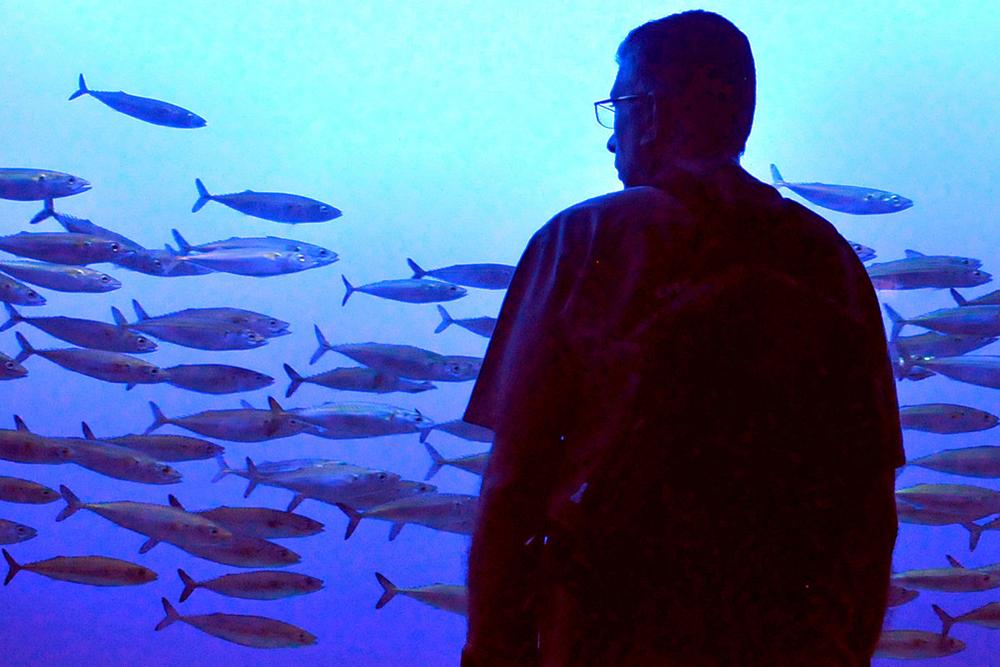 Photo: Peter Winch/Oceanic Society
Photo: Peter Winch/Oceanic Society
A humpback whale in full breach last Sunday near the Southeast Farallon Island — researchers stationed at the island counted 93 humpback whales, 21 blue whales and one fin whale in a single hour
In one magic hour Sunday, researchers stationed at the South Farallon Islands counted 93 humpback whales, 21 blue whales and one fin whale, according to Mary Jane Schramm of the Greater Farallones National Marine Sanctuary.
There hasn’t been anything like this verified in modern times.
In addition, onlookers at Land’s End saw eight to 10 humpbacks just a mile offshore — pectoral fin slapping, lob tailing and both singular and serial breaching, reported Nan Sincero of the Oceanic Society and field scout Paul Judge.
At the same time, on a whale-watching trip with the Oceanic Society on the Salty Lady out of San Francisco, Capt. Roger Thomas said he sighted 25 humpbacks and three blue whales, most within range of Southeast Farallon Island.
“It’s like an eating contest out there,” Schramm said.
A vast amount of krill has brought in the blue whales. Large schools of anchovies and mackerel have attracted the humpbacks.
“One blue can consume up to four tons of krill per day when in maximum feeding mode,” Schramm said. “That’s right now, apparently, and right here.”
Blue whales are the biggest air-breathing mammals on Earth. Often double the size of a bus, when they surge to the surface to feed, you might see them emerge with krill-loaded seawater gushing from their giant mouths.
Several factors explain their arrival. Last month, a strong wind out of the northwest pushed across the sea toward the Bay Area. Along with the wind came cold, deep, nutrient-rich water from the edges of the continental shelf, where it surged upward to the surface waters of the Gulf of the Farallones Sanctuary.
When sunlight penetrated that nutrient-rich water, it launched the marine food chain. The most obvious result from this major upwelling event is the abundance of krill. All the critters offshore, from nesting murres and puffins at the Farallones to salmon — and to blue whales — have been feasting.
The result is that there may be no better time to see a blue whale than now. Some avid wildlife watchers can go a lifetime without sighting a blue whale, and yet to say we would expect it on a trip this weekend is mind-boggling.
Yet big blue is not alone. Humpback whales, often about 50 feet and 40 tons — known for their spectacular jumps and pirouettes — also have arrived in high numbers.
With your boat in neutral, humpbacks often will approach as if to show off.
I’ve had them jump right alongside, splashing everyone on board. Another time, I watched a dozen humpbacks jump in half-spin pirouettes around us for an hour. In another encounter, a dozen humpbacks swam in a coordinated circle just ahead of us, blowing bubbles to create an underwater curtain and keep their feed encircled while they took turns diving and then lunge-feeding through the center of the circle.
Last year, in Monterey Bay, I paddled out 10 miles and had a humpback surface so close that it hit me with the spray from its blowhole.
The largest number of sightings in the past week have been by land-based researchers called “Point Blue.” This is the latest incarnation of the Point Reyes Bird Observatory, which contracts with the U.S. Fish and Wildlife Service to maintain a presence on Southeast Farallon Island. They are deeply involved in seabird research, but their work includes one-hour daily snapshots, a part of larger efforts to prevent whale deaths from collisions with large vessels.
The second-highest number of sightings have been on whale-watching boats, such as the Salty Lady with the Oceanic Society. Thomas said captains have pinpointed the location of the blue whales, and in the process, many humpbacks have been sighted as well, plus a huge array of shorebirds attracted to the area by feed.
On land, the best sites to see whales at the mouth of the bay have been Lands End and lookouts along the coastal trail on the San Francisco Headlands, and at Point Bonita Lighthouse and cliff-top lookouts along the west end of Conzelman Road at the Marin Headlands.
“The humpbacks at the entrance to the bay have been hanging out for weeks,” Sincero said. “They are in heaven with all the food out there.
“There’s a young humpback I saw that loves to come up to the surface and curl its back, almost like Nessie (the Loch Ness Monster), and has been breaching quite a bit, too.”
It seems every week there is news of another landmark event along the coast. It’s becoming a golden era for the Greater Farallones Sanctuary.
Info: Farallon Islands Whale Watching, Oceanic Society, reserve at (415) 256-9604, whale hotline at (415) 258- 8220; www.oceanicsociety.org.
Tom Stienstra’s Outdoor Report can be heard at 7:35 a.m., 9:35 a.m. and 12:35 p.m. Saturdays on KCBS (740 and 106.9). E-mail: tstienstra@sfchronicle.com Twitter: @StienstraTom
Purple blobs explained
At low tide this week on the Berkeley shoreline near Ashby Avenue, giant purple blobs covered half of the exposed beach, field scout Stephanie Manning reported.
They are sea slugs — formally called sea hares — from Baja, said Mary Jane Schramm of the Greater Farallones National Marine Sanctuary.
“The likelihood is that the die-off is the end stage of a mass-mating event,” Schramm said. “These seemingly ill-favored critters are quite the party animals.”
She said such seasonal mass events occur naturally all along the sea slug’s range to southern Mexico, often in remote, pristine areas.
The sea slugs have been washing up at Berkeley for about three weeks. Many believe their arrival in Bay Area waters, like that of the rookery of great white sharks two weeks ago in Monterey Bay near Santa Cruz, is a harbinger of the formation of an El Niño and a broad offshore warming of Pacific currents.
Read the original post: www.sfgate.com









